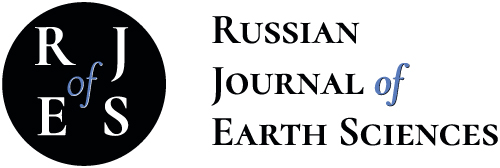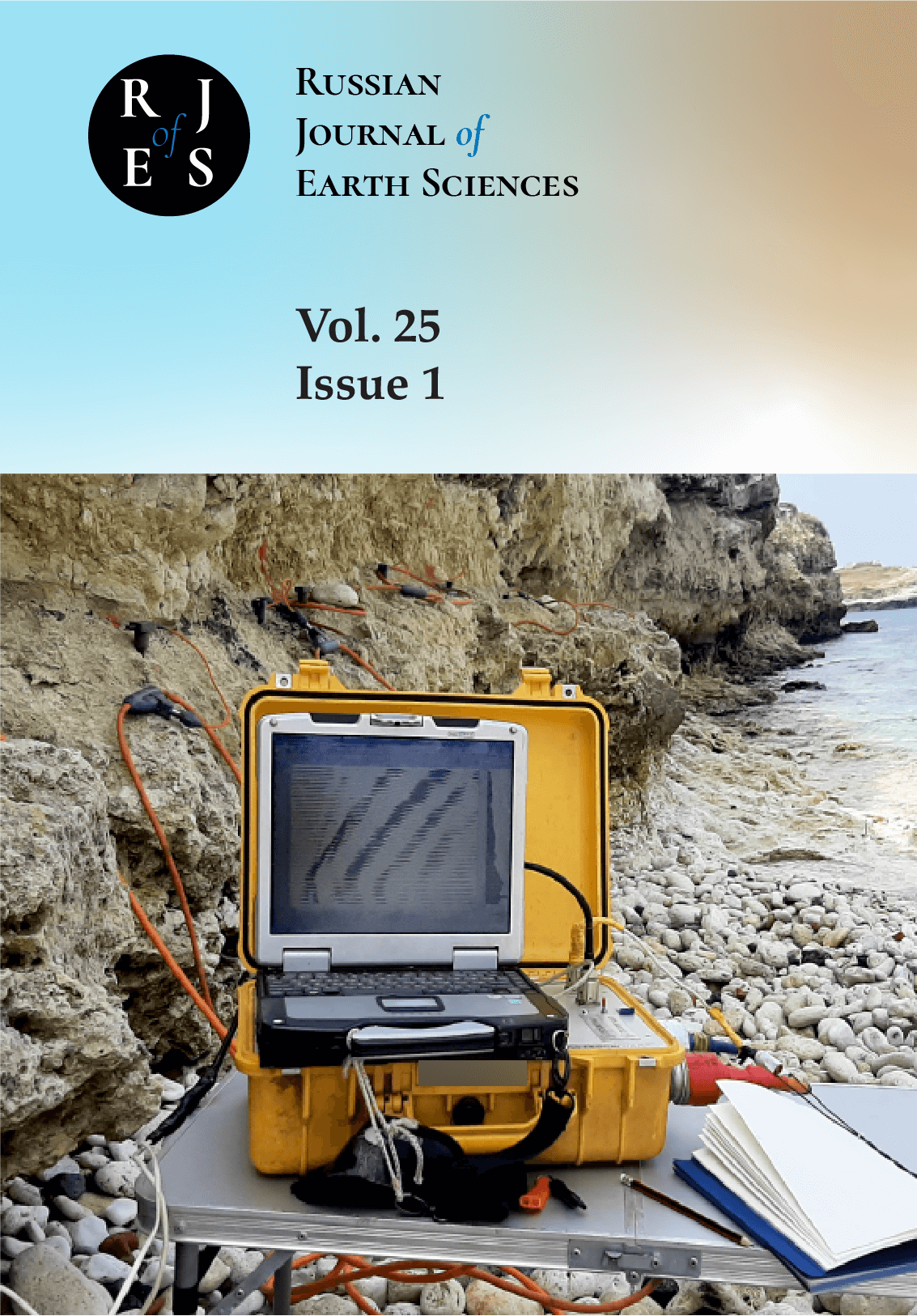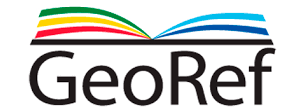VAK Russia 1.6
UDC 551.515
UDC 551.509.313
UDC 55
UDC 550.34
UDC 550.383
CSCSTI 37.01
CSCSTI 37.15
CSCSTI 37.25
CSCSTI 37.31
CSCSTI 38.01
CSCSTI 36.00
CSCSTI 37.00
CSCSTI 38.00
CSCSTI 39.00
CSCSTI 52.00
Russian Classification of Professions by Education 05.00.00
Russian Library and Bibliographic Classification 26
Russian Trade and Bibliographic Classification 63
BISAC SCI SCIENCE
Experimental short-term numerical weather prediction system based on the Weather Research and Forecasting (WRF) model with grid spacing of 1 km for the city of Khabarovsk, Russia is presented. Single-layer urban canopy parametrization is used in the model runs and takes into consideration urban land use. Urban land surface consists of three types: low-rise, high-rise buildings and industrial zones. Niceties of forecasts’ interpretation in a large city based on data of a high-resolution numerical grid are considered. Simulations of the WRF model with the grid spacing of 1 km have shown better quality of prediction in the city than forecasts on the grid spacing of 5 km for the period of time from June to December of 2023. Mean absolute errors of the forecasting speed and direction of surface wind with a velocity above 10 m/s are 2.9 m/s and 3.2 m/s, and 14∘ and 32∘ and absolute error of the forecasting air temperature is 1.6∘ and 3.1∘ for the WRF model with the grid spacing of 1 and 5 km respectively for the considered period of time.
numerical weather prediction, mesoscale process, heavy rainfall, strong wind, land use, WRF-ARW, Khabarovsk
1. Grigoriev V. A., Ogorodnikov I. A. Problems of cities’ ecologization in the world, Russia and Siberia: Analytical review. — Novosibirsk : Ecology. Series of analytical reviews of world literature, Issue 63. State Public Scientific, Technical Library of the Siberian Branch of the Russian Academy of Sciences, 2001. — P. 152. — EDN: https://elibrary.ru/FMJFFB ; (in Russian).
2. Kuznetsova I. N., Brusova N. E., Nakhaev M. I. Moscow Urban Heat Island: Detection, boundaries, and variability // Russian Meteorology and Hydrology. — 2017. — Vol. 42, no. 5. — P. 305–313. — DOI:https://doi.org/10.3103/S1068373917050053. EDN: https://elibrary.ru/YNWCKX
3. Rivin G. S., Rozinkina I. A., Vil’fand R. M., et al. Development of the High-resolution Operational System for Numerical Prediction of Weather and Severe Weather Events for the Moscow Region // Russian Meteorology and Hydrology. — 2020. — Vol. 45, no. 7. — P. 455–465. — DOI:https://doi.org/10.3103/S1068373920070018. EDN: https://elibrary.ru/RVBBLZ
4. Romanskiy S. O., Verbitskaya E. M. Short-Term High-Resolution Numerical Weather Prediction Based on Wrf-Arw Model on the Territory of Vladivostok City // Vestnik of the Far East Branch of the Russian Academy of Sciences. — 2014. — 5(177). — P. 48–57. — EDN: https://elibrary.ru/TNDODH ; (in Russian).
5. Romanskiy S. O., Verbitskaya E. M. Strong Gusty Winds in the City of Yuzhno-Sakhalinsk in the Summer of 2014 // Geosphere Research. — 2023. — No. 4. — P. 141–154. — DOI:https://doi.org/10.17223/25421379/29/10. — EDN: https://elibrary.ru/LZBUBM ; (in Russian).
6. Tarasova M. A., Varentsov M. I., Stepanenko V. M. Parameterization of the Interaction between the Atmosphere and the Urban Surface: Current State and Prospects // Izvestiya, Atmospheric and Oceanic Physics. — 2023. — Vol. 59, no. 2. — P. 111–130. — DOI:https://doi.org/10.1134/s0001433823020068. DOI: https://doi.org/10.31857/S0002351523020062; EDN: https://elibrary.ru/HPPHSS
7. Buchhorn M., Smets B., Bertels L., et al. Copernicus Global Land Service: Land Cover 100m: collection 3: epoch 2019: Globe. — 2020. — DOI:https://doi.org/10.5281/ZENODO.3939050. — (visited on: 17.11.2022).
8. Chen F., Kusaka H., Bornstein R., et al. The integrated WRF/urban modelling system: development, evaluation, and applications to urban environmental problems // International Journal of Climatology. — 2011. — Vol. 31, no. 2. — P. 273–288. — DOI:https://doi.org/10.1002/joc.2158.
9. Dowell D. C., Alexander C. R., James E. P., et al. The High-Resolution Rapid Refresh (HRRR): An Hourly Updating Convection-Allowing Forecast Model. Part I: Motivation and System Description // Weather and Forecasting. — 2022. — Vol. 37, no. 8. — P. 1371–1395. — DOI:https://doi.org/10.1175/waf-d-21-0151.1. EDN: https://elibrary.ru/EXHVMO
10. Garuma G. F. Review of urban surface parameterizations for numerical climate models // Urban Climate. — 2018. — Vol. 24. — P. 830–851. — DOI:https://doi.org/10.1016/j.uclim.2017.10.006.
11. Hong Kong Observatory. Numerical modelling for weather prediction in Hong Kong. — 2022. — URL: https://www.hko.gov.hk/en/wservice/tsheet/nwp.htm ; (visited on: 17.01.2024).
12. Jeworrek J., West G., Stull R. W. WRF Precipitation Performance and Predictability for Systematically Varied Parameterizations over Complex Terrain // Weather and Forecasting. — 2021. — Vol. 36, no. 3. — P. 893–913. — DOI:https://doi.org/10.1175/waf-d-20-0195.1. EDN: https://elibrary.ru/DJKQAD
13. Kim G., Lee J., Lee M.-I. Impacts of urbanization on atmospheric circulation and aerosol transport in a coastal environment simulated by the WRF-Chem coupled with urban canopy model // Atmospheric Environment. — 2021. — Vol. 249. — P. 118253. — DOI:https://doi.org/10.1016/j.atmosenv.2021.118253. EDN: https://elibrary.ru/CMFKWL
14. Kusaka H., Kondo H., Kikegawa Y., et al. A Simple Single-Layer Urban Canopy Model For Atmospheric Models: Comparison With Multi-Layer And Slab Models // Boundary-Layer Meteorology. — 2001. — Vol. 101, no. 3. — P. 329–358. — DOI:https://doi.org/10.1023/a:1019207923078. EDN: https://elibrary.ru/ARTEXL
15. Kwok Y. T., Ng Y. Y. E. Trends, topics, and lessons learnt from real case studies using mesoscale atmospheric models for urban climate applications in 2000-2019 // Urban Climate. — 2021. — Vol. 36. — P. 100785. — DOI:https://doi.org/10.1016/j.uclim.2021.100785. EDN: https://elibrary.ru/XBJMFK
16. Lin Y., Wang C., Yan J., et al. Observation and Simulation of Low-Level Jet Impacts on 3D Urban Heat Islands in Beijing: A Case Study // Journal of the Atmospheric Sciences. — 2022. — Vol. 79, no. 8. — P. 2059–2073. — DOI:https://doi.org/10.1175/jas-d-21-0245.1. EDN: https://elibrary.ru/YPIPHL
17. Masson V., Lemonsu A., Hidalgo J., et al. Urban Climates and Climate Change // Annual Review of Environment and Resources. — 2020. — Vol. 45, no. 1. — P. 411–444. — DOI:https://doi.org/10.1146/annurev-environ-012320-083623. EDN: https://elibrary.ru/WLKKFX
18. Mills G., Molina L. T., Schluenzen H., et al. Guidance on Integrated Urban Hydrometeorological, Climate and Environment Services. Vol. II: Demonstration Cities. — Geneva, Switzerland : Publications Board World Meteorological Organization, 2021. — 166 p.
19. Shin H. H., Dudhia J. Evaluation of PBL Parameterizations in WRF at Subkilometer Grid Spacings: Turbulence Statistics in the Dry Convective Boundary Layer // Monthly Weather Review. — 2016. — Mar. — Vol. 144, no. 3. — P. 1161–1177. — DOI:https://doi.org/10.1175/mwr-d-15-0208.1.
20. Siuta D., West G., Stull R. W. WRF Hub-Height Wind Forecast Sensitivity to PBL Scheme, Grid Length, and Initial Condition Choice in Complex Terrain // Weather and Forecasting. — 2017. — Vol. 32, no. 2. — P. 493–509. — DOI:https://doi.org/10.1175/waf-d-16-0120.1.
21. Skamarock W. C., Klemp J. B. A time-split nonhydrostatic atmospheric model for weather research and forecasting applications // Journal of Computational Physics. — 2007. — Vol. 227, no. 7. — P. 3465–3485. — DOI:https://doi.org/10.1016/j.jcp.2007.01.037. EDN: https://elibrary.ru/MTVBDN
22. Solbakken K., Birkelund Y., Samuelsen E. M. Evaluation of surface wind using WRF in complex terrain: Atmospheric input data and grid spacing // Environmental Modelling & Software. — 2021. — Vol. 145. — P. 105182. — DOI:https://doi.org/10.1016/j.envsoft.2021.105182.
23. Wang C.-C. On the Calculation and Correction of Equitable Threat Score for Model Quantitative Precipitation Forecasts for Small Verification Areas: The Example of Taiwan // Weather and Forecasting. — 2014. — Vol. 29, no. 4. — P. 788–798. — DOI:https://doi.org/10.1175/waf-d-13-00087.1.
24. Wang L., Li D. Urban Heat Islands during Heat Waves: A Comparative Study between Boston and Phoenix // Journal of Applied Meteorology and Climatology. — 2021. — Vol. 60, no. 5. — P. 621–641. — DOI:https://doi.org/10.1175/JAMC-D-20-0132.1. EDN: https://elibrary.ru/JPLQAI


















